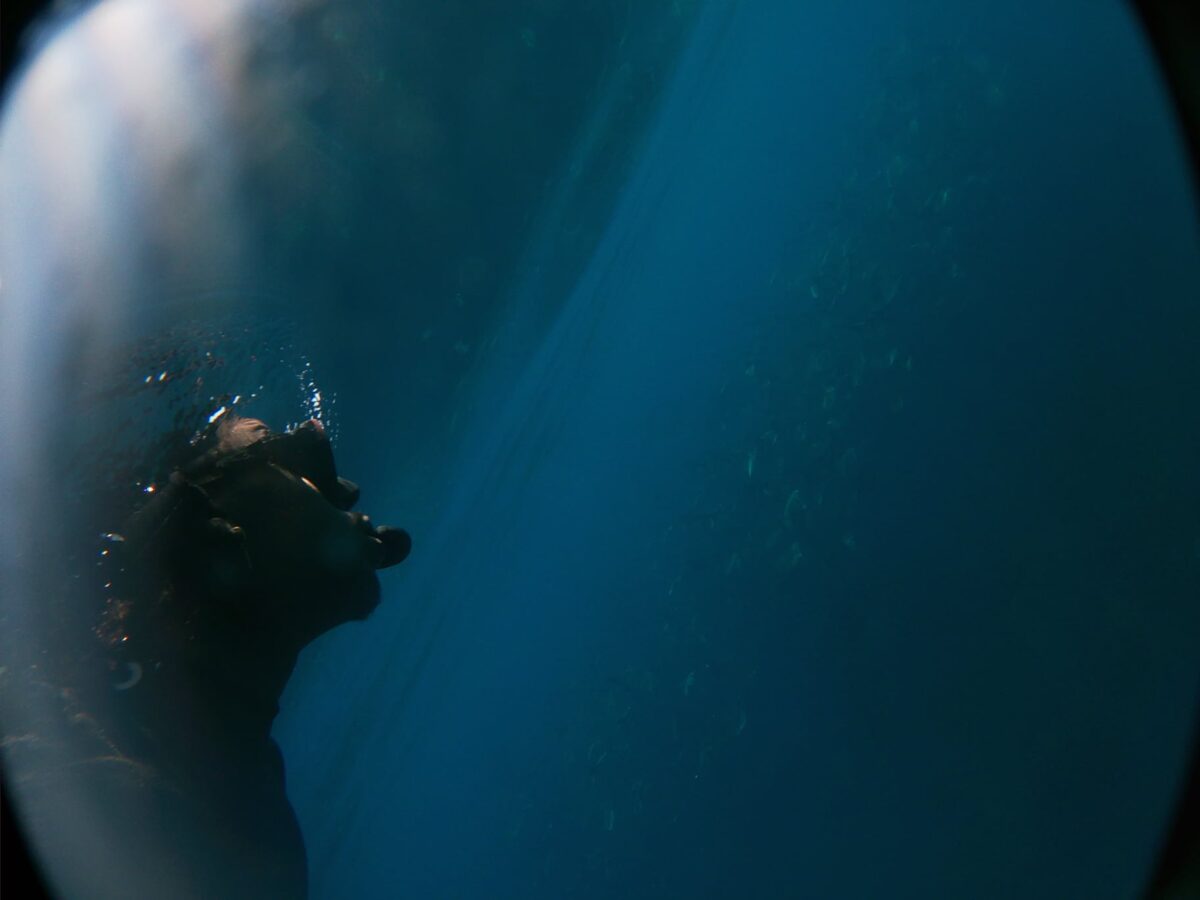Rubik’s Cubes, Mobula Aggregations, Spanish, and Drones…what do they all have in common, you might wonder? Well for starters, all of them can be pretty tricky to figure out, but more importantly these are the things l learned more about during my time in the southwestern peninsula that is Baja Mexico. I was invited to embark on some group research with Mobula aggregations by none other than Joshua Stewart, the former 2005 NA OWUSS Rolex Scholar. As a quantitative conservation ecologist, specializing in large marine vertebrates and as a postdoctoral research fellow in NOAA’s Cetacean Health and Life History Program, Josh has had a wealth of experience dealing with all sorts of marine vertebrates. However, if you asked him what marine animal his favorite was, I’m fairly certain he would claim his love for Mobulas without hesitation. As a genus of rays in the family Mobulidae, Mobulas are found worldwide in tropical and warm, temperate seas. Once Josh had invited me to come down to Mexico and after being cooped up in the colder Northeast parts of the states, the idea of warm waters, sun, and getting to know more about a new and unique marine animal sounded exactly like what I needed. In addition, this would not only technically be my first international scholarship adventure, but it would be my first experience doing field research with a macro-organism. Not only that, but a marine organism like Munk’s Devil Ray! Coming from Ohio, there was not much to do in the way of marine life and so with that all that in mind, I was already practically jumping on the plane to Baja, Mexico.
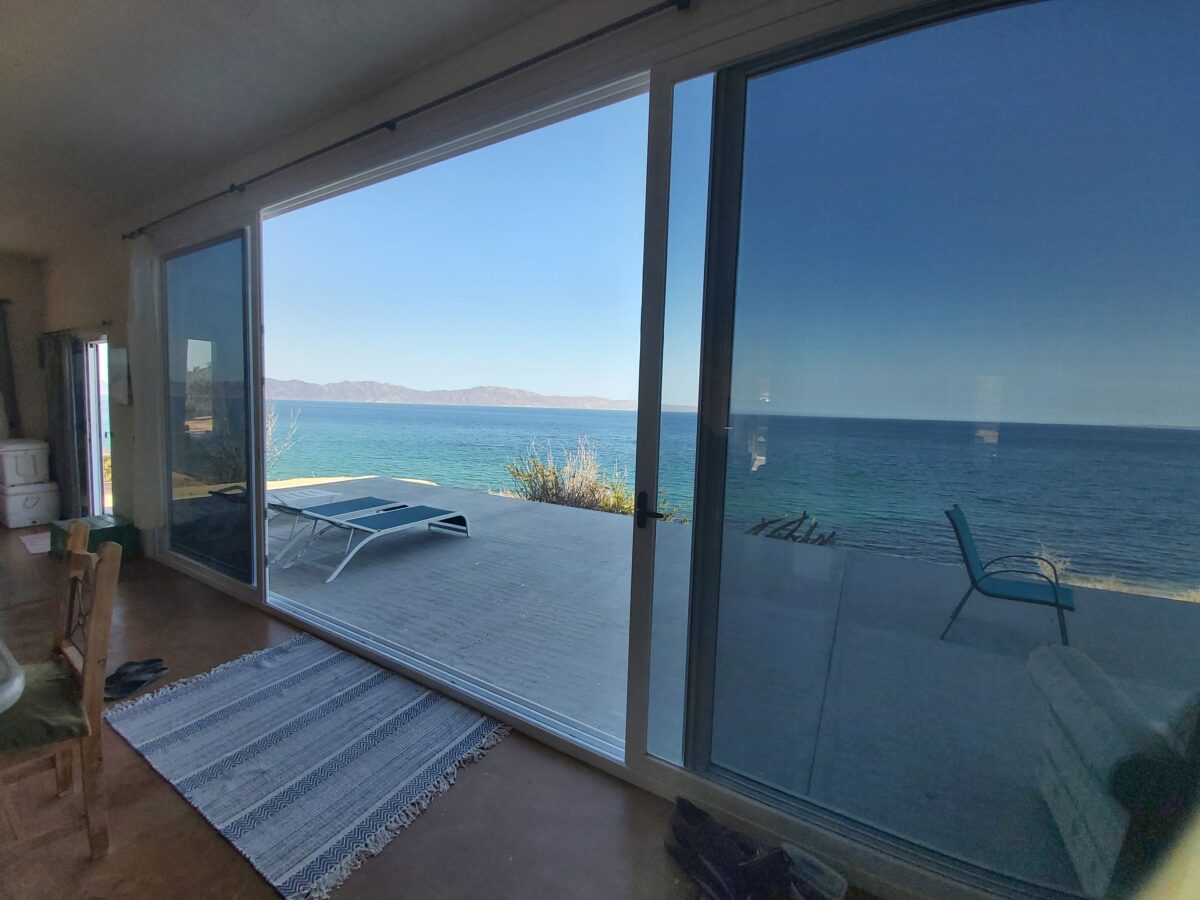
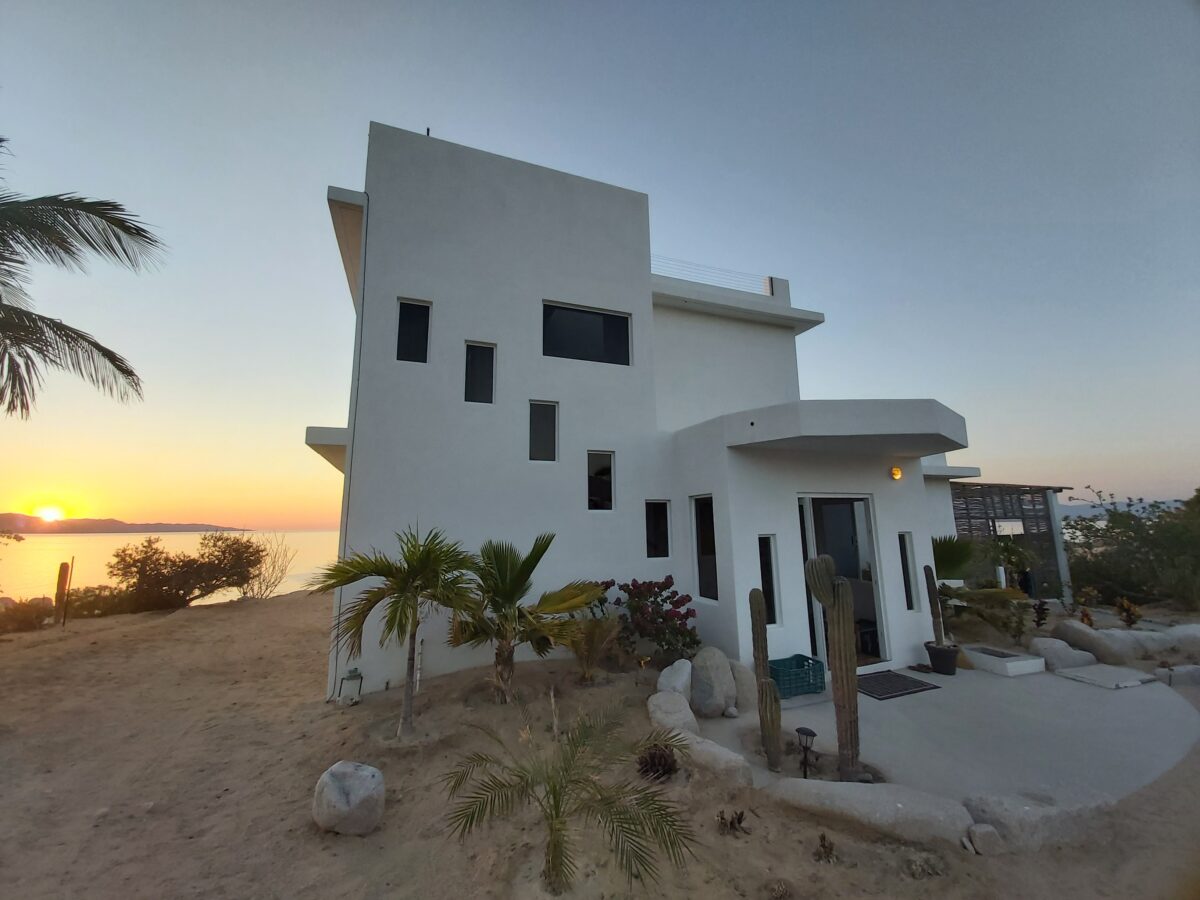
Of the other people involved on the project who were coming in from outside the country, I was the first to arrive. After about an hour of getting through customs and being completely lost, I got to meet up with Josh and later we met up with some of the other folks we would be working with. Once we were all together, we started our long drive through the desert and talked, getting to know one another better. As we rode out, I noticed that the area started to seem more and more like rural desert, and I remember wondering what kind of place we would be staying at. Of course, I’ll never be opposed to being more out in nature, but my curiosity only grew until finally, we reached the area we were staying at. Once I got out of the vehicle, I could not believe how beautiful our place was. It was an Airbnb that had several beautiful rooms, a large kitchen, an open living space, a balcony, accessible roof top and a pathway that led down a cliff to the beach. It was magnificent and seemingly out in the middle of nowhere. Perhaps most impressive, though, was the floor to ceiling windowpanes that slid apart and gave way to a flat deck with the most serene and picturesque view. It perfectly fit the name of the place we were in: La Ventana which in Spanish translates to The Window. I was completely floored and for a moment it felt like I was in a dream…but of course we were not there to gawk. We were here doing my first marine focused research project and I could not have been more pumped.

Our project was funded by the Walter Munk Foundation, an organization named after a legendary oceanographer from Scripps who passed away a couple of years ago and whom the species, Munk’s Devil Ray, is named after. As I understood it, we were there to do some basic observational work with the Munk’s Devil Ray aggregations. The goal was to evaluate the size and sex of individuals, as well as do some visual tagging to estimate abundance. Yet, as I got to know the people around me and their work, I began to realize that our project was more multifaceted than I had thought. It was more of an amalgamation of several other smaller projects. There were Marta, Melissa, Nerea and Fernanda, who were mostly working on getting drone transects to better capture and calculate Mobula aggregation density and abundance. Don and Kelly, who both have been doing Mobula research in that area for years, were working with Josh, Abel and two old friends of Don who were manning the boat and the net to catch some of the rays and place physical tags. There were also Ben and George, both of whom were helping take underwater photos. Lastly of course there was little ole me, the new kid on the block, starry eyed, a tad nervous, and wondering what I could bring to the table. In all honesty I wasn’t sure. All I knew was that I was eager to try, get involved, and learn all I could. That would be enough. Right?
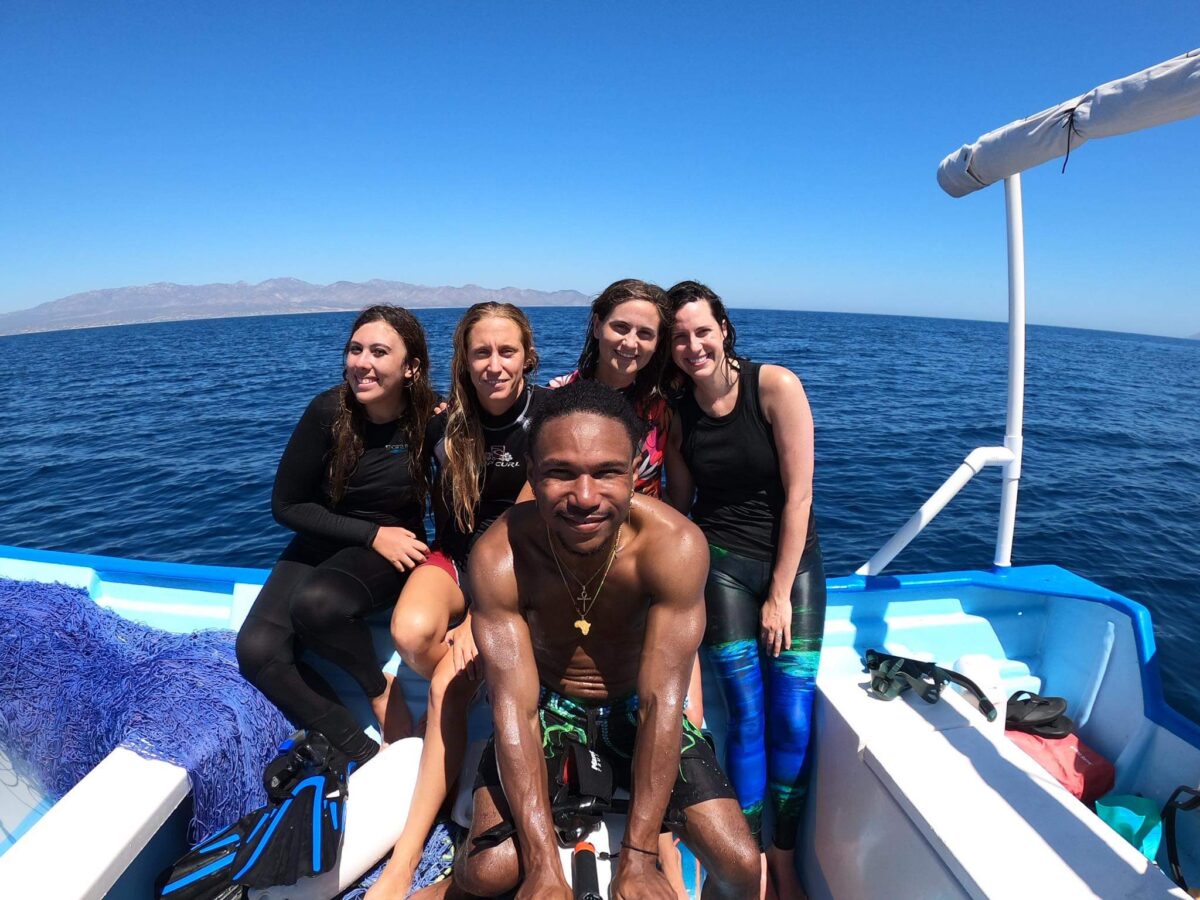
Well…I admit, at times I felt like it wasn’t enough. Regardless of my intentions and my desire to be a part of the things around me, I really struggled at first. The language barrier was the hardest. With almost everyone but me being fluent in Spanish (notwithstanding my on again off again practice), trying to find where I fit in was rough. Entire conversations would happen; jokes, stories and plans were taking place right in front of me and yet I could only pick out thirty percent of what was being said thirty percent of the time (this was less true of the non- native speakers). In addition, it seemed that almost everyone already knew each other or had worked together before in some capacity. It was indeed endearing but a bit uncomfortable, too. The icing on my depression cake was knowing that everybody aside from myself had somewhat of a designated purpose and, to be honest, I felt useless or in the way at times. Of course, my black sheep status was no one’s fault but it was hard when I was sometimes handed the short end of the stick. Not knowing what else to do, I got a bucket of ice cream (as one does under duress) and started retreating into myself. Nevertheless, in true knight in shining armor fashion, Josh noticed my distress, and came around to help pull me back out of my funk. He got me re-engaged in the research, went over the different parts of what we were doing and invited me on different outings that were going on. He even invited me to help plant some acoustic receivers that would be used in coordination with our tags to better understand whether the Mobulas stay together and if not, where they go when they are not aggregating. Of course, I blundered on the dive, dropping the ball weight we were using to anchor the equipment at the last second before our safety stop ended. Whoops! Still though, Josh helped remind me of why I was there and while I wasn’t able to be in the thick of it all, I remembered that learning is not always about being in the action or being a part of everything but that sometimes just being present, listening and observing can be an important way to learn as well. I have to say that I was so thankful for his support and because of it I had an amazing time and amazing experiences despite my lackluster Spanish skills and somewhat undefined purpose. In fact, I ended up doing a lot, seeing a lot, learning a lot and making some true lifelong friends, so thank you, Joshua.
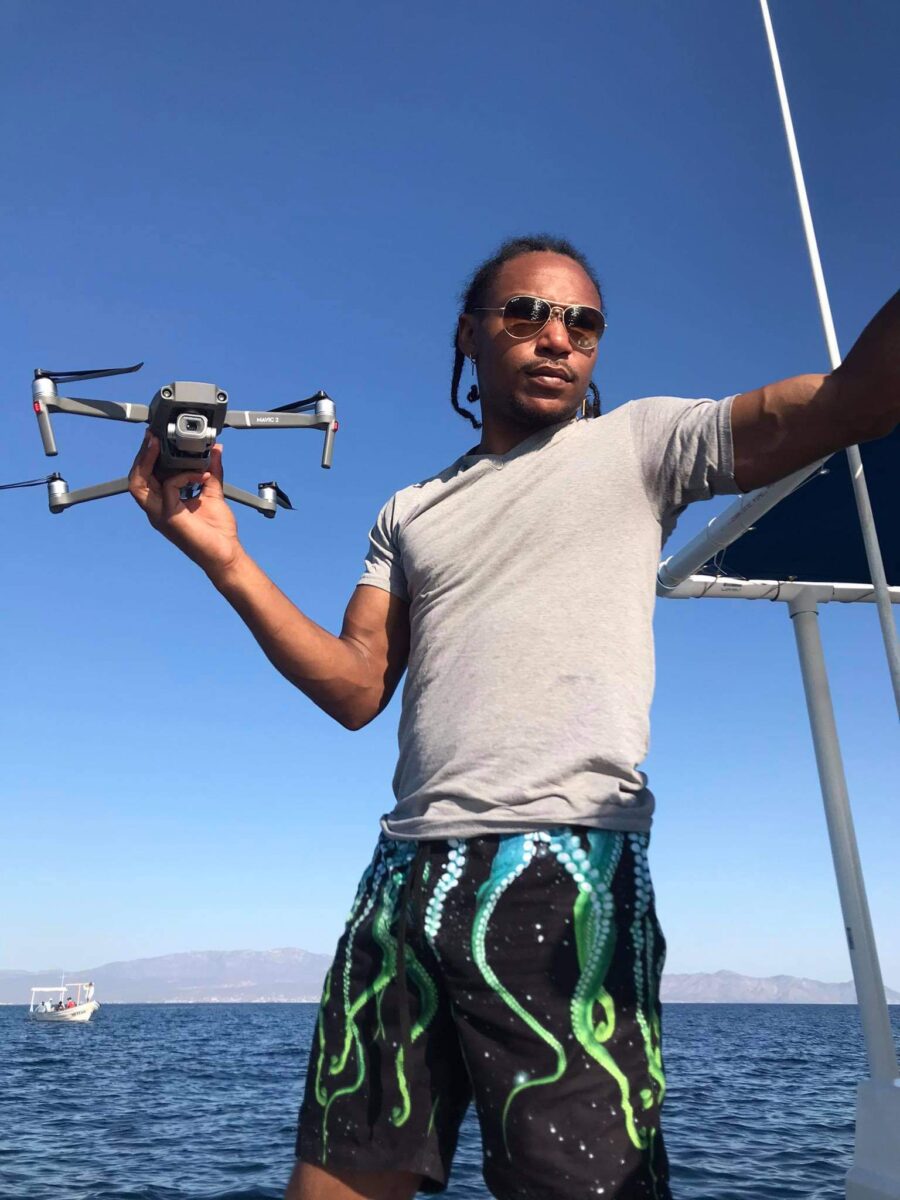

One of the first things I got to work with was the drone. After Melissa, Nerea, Fernanda and I spent hours trying to figure out how to simply turn the thing on, we eventually got it going and took our first flight off the deck. It was insanely cool to see how it was able to take stock from an aerial point of view. We tested it and flew it around the area, getting used to the controls and how to move the camera mid-flight. Most importantly though, we practiced catching it on descent. Since we were going to be using it out in the field, landing it safely meant lowering it on a small moving boat in the middle of the ocean, which in itself would be dicey. It required patience, poise, a steady hand, and quickness. For my first time catching the drone, it was important to me that I capture the moment and after employing a comical pose to solidify the occasion, I was playfully given the tittle of Drone Man as if I was already adorned in a full cape and spandex. It was a fun nickname that I heard and laughed about many times throughout the trip but if I was to be Drone Man, Drone Woman would have certainly been Melissa who had joined us from UC Santa Cruz. Melissa became our pseudo drone expert and teacher (after experiencing much trial and error herself) and showed us a lot about how to use the drone in the following days. She became especially adept at capturing some of the most impressive aerial videos and pictures of the Mobula aggregations using the drone. She was even able to use it to capture images and videos of other marine animals. For instance, there was a point where we were able to witness a rare moment in which she had captured video of a small pod of orcas teaching their calf how to hunt, using a solitary and somewhat bewildered-seeming sea turtle for target practice. It was fascinating to witness how this fairly new piece of innovative technology could be utilized for science and how it allowed such a unique perspective on capturing nature.
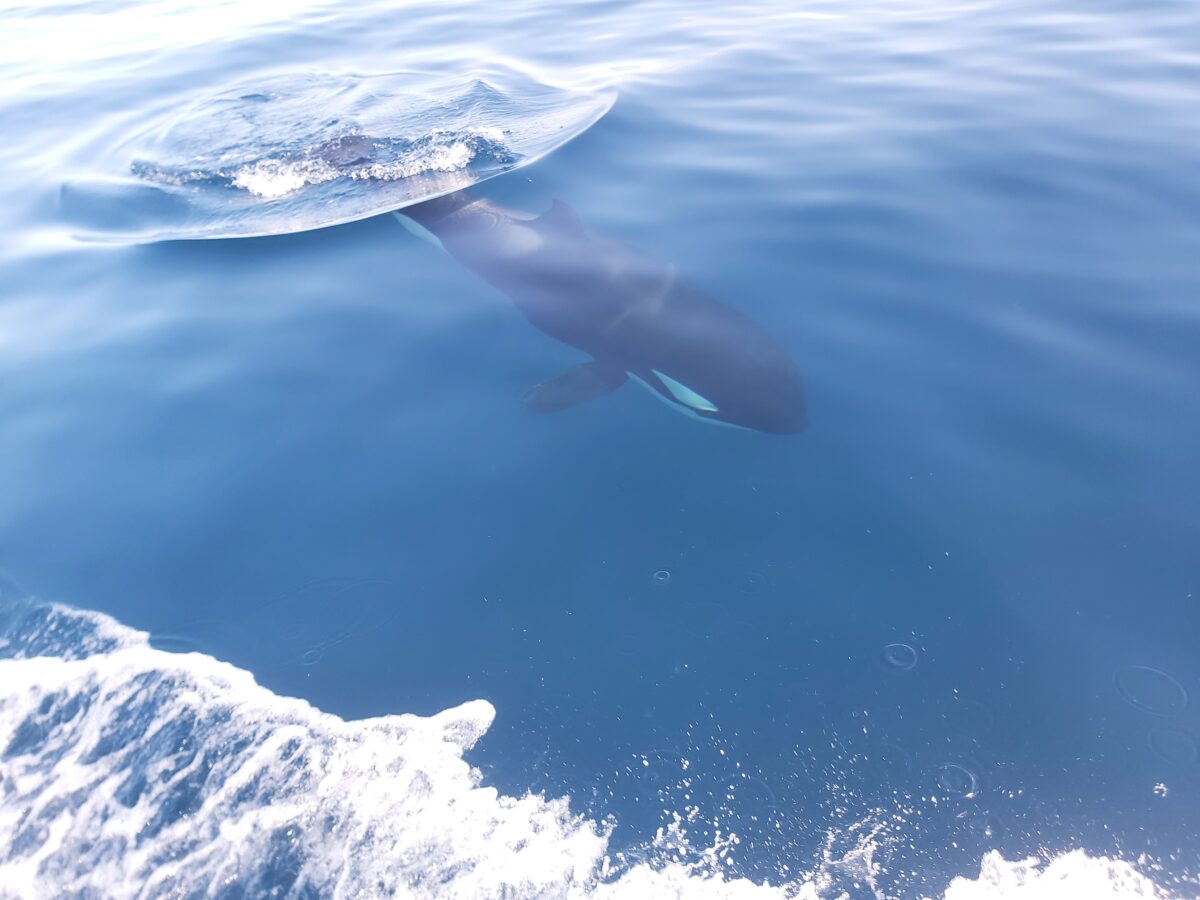

However, for me, nothing quite compares in terms of capturing nature than hopping in the water and getting an up close, firsthand experience with these amazing animals. It is one of the reasons I enjoy field work so much. Hence, it was appropriate that on World Oceans Day we got out on the boat and were able to swim with one of the largest groups of Mobulas I had ever seen. After spotting a large group or fever of rays from a distance, we were able to predict the group’s trajectory and jump into the water ahead of them. At first when I got in the water all I could see was the never-ending blue of the ocean, but slowly after a few moments I could see the large cluster of Mobulas swimming straight towards me! It was surreal, magical, and a bit unnerving but overall, it was amazing to have hundreds of rays swimming right by. Words can’t quite describe the feeling, but it was my first time experiencing such a phenomenon. Thankfully, that was not the only time during our tenure there that I was able to jump in and swim with these large aggregations. Quite a few times we recorded, saw and swam with huge groups of Mobulas ranging from dozens to thousands and as a result it only made me want to dive more into the research we were there to do.
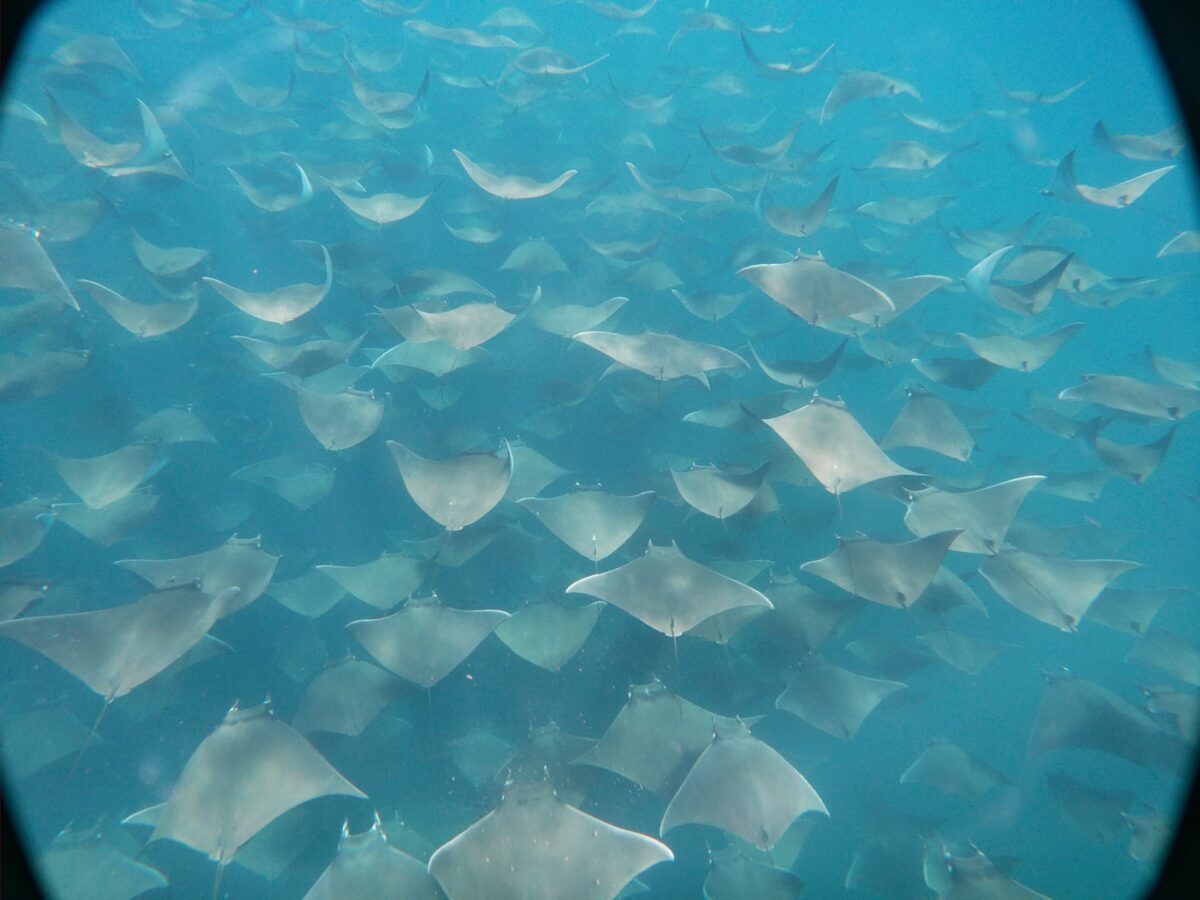


Since one of my main scholarship goals is to get more into underwater scientific research, one of the most memorable and valued moments I had during my time there was helping in the actual tagging of the Mobulas. It was great to not only watch, but participate in the process. First, we would travel across the water until a group of Mobulas were spotted. This was done by closely watching under the boat or looking and listening out in the distance to see if there was any splashing on the water’s surface, as many Mobulas, much like whales and other animals, will jump, breaching the surface of the water and descend with a loud flop back into the ocean. Though this is thought to be a mechanism for them to show off for potential mates, get rid of parasites, or communicate, it was also a very effective mechanism for us to locate large groups of them. Once we located a fever of rays we cruised over to where they were spotted and if it was confirmed that they were still there, we would deploy the net that was onboard into the water. After hopefully encircling the group we pulled the net in and one by one collected those that were caught. We then placed the rays in a bin of seawater and took measurements of their length and wingspan. A blood and small tissue sample would then be taken before we flipped them to identity their sex and planted a tag within a body cavity under their gills. Lastly, we patched the wound and released the ray back into the water. Although a part of me did feel bad for the invasive part of the procedure, it was truly fascinating to watch, and perhaps one of my favorite parts of the experience. During our tagging I had the job of holding the Mobulas while Josh and the others performed the tagging and tissue collection. Though not the most glamorous role, I was beyond thrilled to be a part of what was happening. However, the true star of the show during this process was Abel. Working as a researcher for Pelagios (more about them later), Abel quickly became MVP in my eyes and truly was amazing at everything he did. He was not only an extremely gifted cook who made all of us amazingly beautiful and tasty dinners and desserts every night, but he was also incredibly smart and talented. When we were tagging, he was the one who did almost everything including the blood and tissue collection, the insertion of the tags and most impressively to me, the suturing that he made look as easy as tying your shoe. He was absolutely awe inspiring.
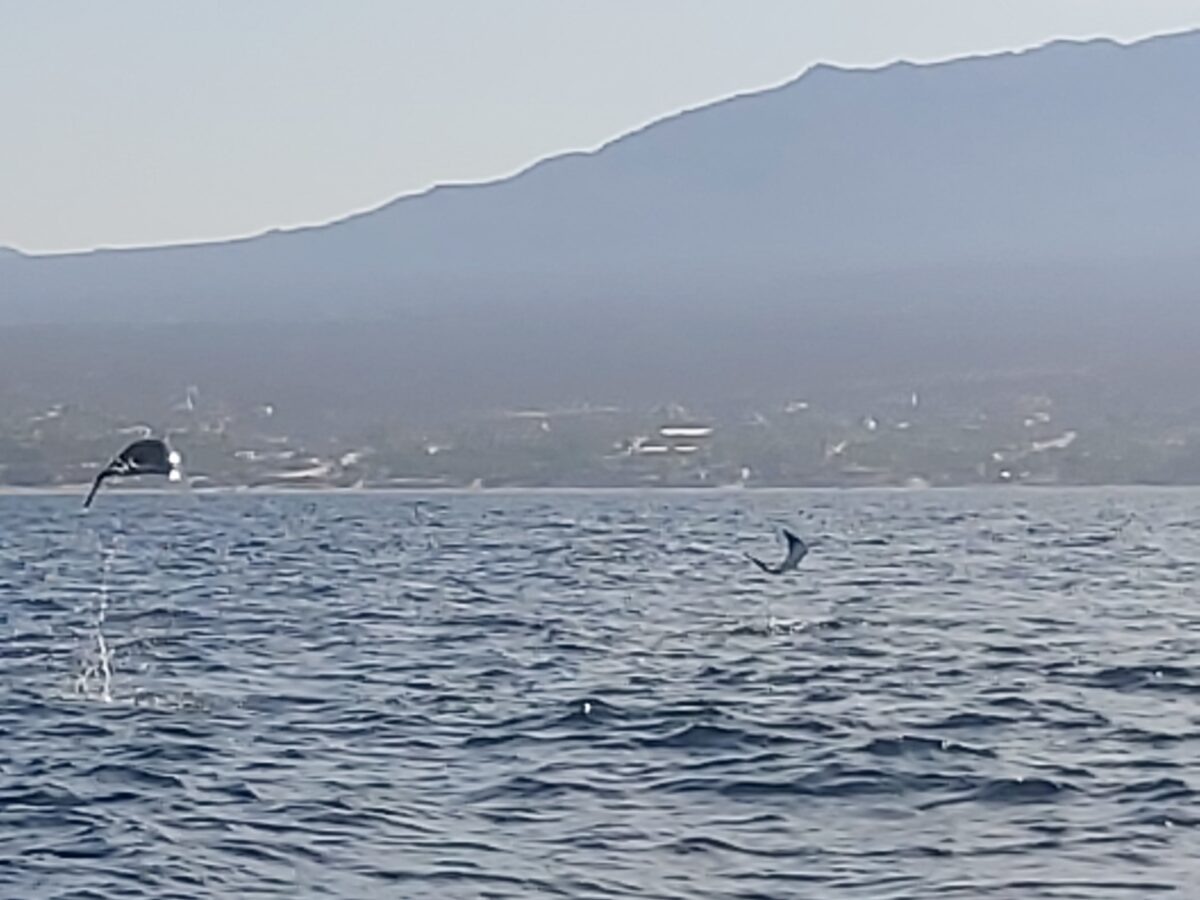

Did I forget to mention that Abel was extremely smart? One of my fondest memories of being in La Ventana was him teaching me (several times) how to solve a Rubik’s Cube that I happened to find in one of the cabinets in the Airbnb. Upon discovering the little puzzle one day, I decided to take a crack at it. While I can usually solve about two faces of a Rubik’s Cube, there had only been one other time in my life that I had actually and completely solved one (don’t ask me how that happened). Granted this time, with only the blue face and half of the red face completed, I reached my wits end, put the puzzle down and walked away. Tell me why I came to find a completely solved Rubik’s Cube sitting there, taunting me on the table a few hours later? “WHAT?! What manner of trickery is this? Who was responsible for this sorcery?” I asked around. I later discovered that Abel had solved in mere minutes what I had toiled with for at least an hour. Astonished, I asked if he could teach me the ways of the force. Even through my baffled stupor, he was kind enough to oblige and showed me how he was able to solve the cube in just moments. He handed the cube back to me and after multiple days, multiple tries and constantly forgetting and remembering steps, I finally solved it on my own. It was probably just another fluke but either way, I was so proud of myself. It was one of the many fun and exciting moments that I got to share. Overall, despite my rough beginnings, I did, saw, and learned so much during my time with Josh and the other researchers in La Ventana. I learned how to differentiate between certain Mobula species by their cephalic fins and the different ways they jump out of the water. I got to observe humpback whales, dolphins, turtles, and Orcas in their natural environment. I learned more Spanish, how to solve a Rubik’s Cube, identified a strange and mysterious fish that washed up on the shore, helped fly fun drone flight trajectories that were sometimes in the shape of a pair of pants or a zigzag. I got to watch movies and ate more ice cream (but in a good way this time) with new friends. I got to explore the desert and stare up at a star-filled sky every night. But I think most importantly, I was able to learn a valuable lesson in how to better adapt to my surroundings and I could not thank Joshua and the gang enough for inviting me along
